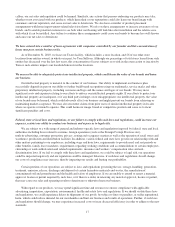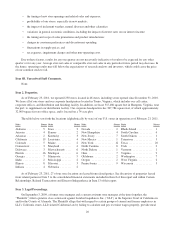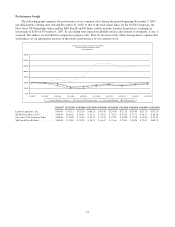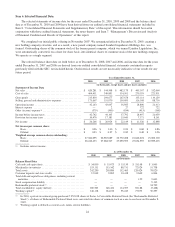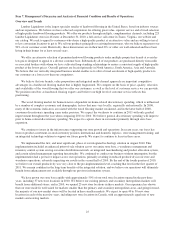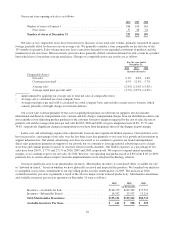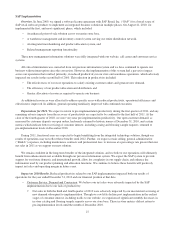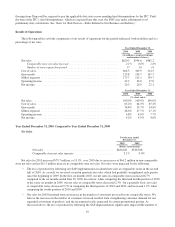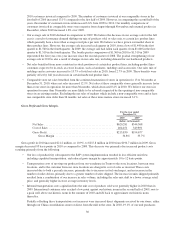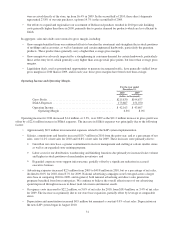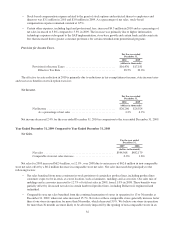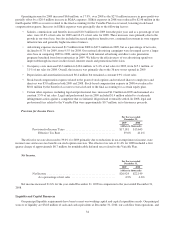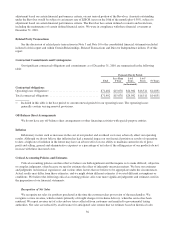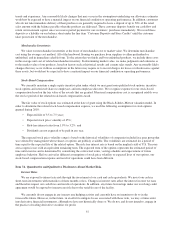Lumber Liquidators 2010 Annual Report Download - page 33
Download and view the complete annual report
Please find page 33 of the 2010 Lumber Liquidators annual report below. You can navigate through the pages in the report by either clicking on the pages listed below, or by using the keyword search tool below to find specific information within the annual report.
SAP Implementation
Overview. In June 2009, we signed a software license agreement with SAP Retail, Inc. (“SAP”) for a broad scope of
SAP retail software products to implement an integrated business solution in multiple phases. On August 21, 2010, we
implemented the first, and most significant, phase, which included:
• An enhanced point-of-sale solution across our entire store base,
• A warehouse management and inventory control system serving our entire distribution network,
• An integrated merchandising and product allocation system, and
• Related management reporting functionality.
These new management information solutions were fully integrated with our website, call center and customer service
systems.
All critical information was converted from our previous information system and we have continued to operate our
business without interruption since the conversion. However, the implementation of this system had a pervasive impact
across our operations that resulted, primarily, in reduced productivity in our store and warehouse operations, which adversely
impacted our results in the second half of 2010. This reduction in productivity included:
• The effectiveness of our store operations to satisfy existing customer orders and generate new demand,
• The efficiency of our product allocation and distribution, and
• Greater allocation of resources required to operate our business.
As additional resources were allocated to address specific areas with reduced productivity, operational efficiency and
effectiveness improved. In addition, general operating familiarity improved with continued execution.
Expectations for 2011. We expect to return to pre-implementation productivity during the first quarter of 2011, and any
remaining adverse impacts from the recovery of productivity are expected to be confined to the first half of 2011. At the
close of the fourth quarter of 2010, we were very near pre-implementation productivity. Our open customer demand, as
measured by customer deposits on open orders, had nearly returned to historic norms at December 31, 2010, and certain
metrics which indicate better servicing of customer interest, including catalog and flooring sample requests, returned to
pre-implementation levels in December 2010.
During 2011, functional areas are expected to begin benefitting from the integrated technology solution, though our
results of operations may not reflect those benefits until 2012. Further, we expect certain selling, general administrative
(“SG&A”) expenses, including maintenance contracts and professional fees, to increase at a percentage rate greater than our
net sales in 2011 as we support our new solution.
We remain confident in the long-term benefits of the integrated solution, and we believe our operations will ultimately
benefit from enhancements not available through our previous information system. We expect the SAP system to provide
support for our future domestic and international growth, allow for complexity in our supply chain, and enhance the
information used by our product planning and allocation functions. We continue to believe these benefits will positively
impact net sales and operating margin in future years.
Impact on 2010 Results. Reduced productivity related to our SAP implementation impacted both our results of
operations for the year ended December 31, 2010 and our financial position at that date.
•Customer Service, Demand and Conversion: We believe our net sales were adversely impacted by the SAP
implementation due to our lack of productivity.
ONet sales in both the third and fourth quarter of 2010 were adversely impacted by our inconsistent servicing of
new demand subsequent to implementation. Though we saw little decline post implementation in the earliest
stages of consumer interest, including traffic to our website, we experienced significant monthly decreases in
in-store catalog and flooring sample requests across our store base. These in-store metrics did not return to
pre-implementation levels until the month of December 2010.
27


